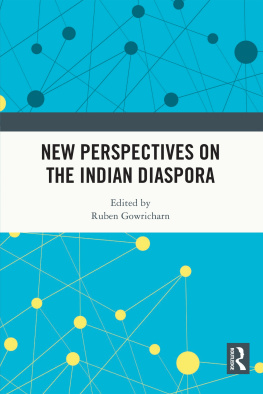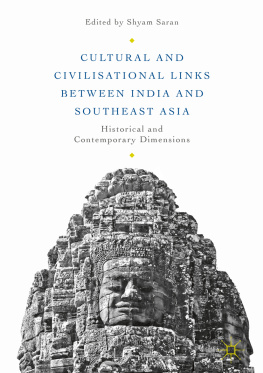Maurits S. Hassankhan - Social and Cultural Dimensions of Indian Indentured Labour and its Diaspora
Here you can read online Maurits S. Hassankhan - Social and Cultural Dimensions of Indian Indentured Labour and its Diaspora full text of the book (entire story) in english for free. Download pdf and epub, get meaning, cover and reviews about this ebook. year: 2016, publisher: Taylor and Francis, genre: Home and family. Description of the work, (preface) as well as reviews are available. Best literature library LitArk.com created for fans of good reading and offers a wide selection of genres:
Romance novel
Science fiction
Adventure
Detective
Science
History
Home and family
Prose
Art
Politics
Computer
Non-fiction
Religion
Business
Children
Humor
Choose a favorite category and find really read worthwhile books. Enjoy immersion in the world of imagination, feel the emotions of the characters or learn something new for yourself, make an fascinating discovery.

- Book:Social and Cultural Dimensions of Indian Indentured Labour and its Diaspora
- Author:
- Publisher:Taylor and Francis
- Genre:
- Year:2016
- Rating:5 / 5
- Favourites:Add to favourites
- Your mark:
- 100
- 1
- 2
- 3
- 4
- 5
Social and Cultural Dimensions of Indian Indentured Labour and its Diaspora: summary, description and annotation
We offer to read an annotation, description, summary or preface (depends on what the author of the book "Social and Cultural Dimensions of Indian Indentured Labour and its Diaspora" wrote himself). If you haven't found the necessary information about the book — write in the comments, we will try to find it.
Social and Cultural Dimensions of Indian Indentured Labour and its Diaspora — read online for free the complete book (whole text) full work
Below is the text of the book, divided by pages. System saving the place of the last page read, allows you to conveniently read the book "Social and Cultural Dimensions of Indian Indentured Labour and its Diaspora" online for free, without having to search again every time where you left off. Put a bookmark, and you can go to the page where you finished reading at any time.
Font size:
Interval:
Bookmark:

Maurits S. Hassankhan, Lomarsh Roopnarine and Radica Mahase

2 Park Square,
Milton Park,
Abingdon, Oxon
OX14 4RN
711 Third Avenue, New York, NY 10017
A catalogue record for this book is available
from the British Library
Catalog record for this book has been requested
ISBN: 978-1-315-27171-2 (ebk)
by Kohli Print, Delhi 110 051

- 1. Plantation Patriarchy and Structural Violence: Women Workers in Sri Lanka
RACHEL KURIAN AND KUMARI JAYAWARDENA - 2. My Life My Story: Narratives of the Women Left Behind
NIVEDITA SINGH - 3. Tracing the Past of Hindustani Indentured Women in Suriname, 1873-1921
TANYA SITARAM
- 1. Plantation Patriarchy and Structural Violence: Women Workers in Sri Lanka
- 4. Gender-specific Problems among Surinamese Hindustanis: Suicide and Alcoholism
INDRA BOEDJARATH - 5. Elderly Surinamese Hindustanis in the Netherlands
NIRMALA BIRJMOHAN - 6. Emotional Loss among Hindustani Migrants in the Netherlands
RAHINA HASSANKHAN - 7. Socializing for Educational Success
ANITA NANHOE
- 4. Gender-specific Problems among Surinamese Hindustanis: Suicide and Alcoholism
- 8. Slavery and Indentured Labour from the Perspective of Art Studies
J.S. (MITRA) RAMBARAN AND R. SAFDAR ZAIDI - 9. Fu Moimoi: Body Art as Identity Marker
HILDE NEUS - 10. God at the Fore-deck and at the After-deck
JOOP VERNOOIJ
- 8. Slavery and Indentured Labour from the Perspective of Art Studies
- 11. The Dhantal's Irreverence: Off-beat as the In-between Time of Indenture
ANANYA J. KABIR - 12. The Role of the Tassa Drum Ensemble in Trinidad and Tobago's Cultural Identity Formation
SATNARINE BALKARANSINGH - 13. The Mike Men of Trinidad: Cultural, Social and Political Influences
PRIMNATH GOOPTAR
- 11. The Dhantal's Irreverence: Off-beat as the In-between Time of Indenture
- What are the legacies of slavery and indentured labour in social, economic, cultural and political fields?
- How did post-slavery identity formation occur in different parts of the world in general?
- What has been the psychological impact of slavery and indentured labour?
- How are transnational identities developing in the world today?
- How is the process of identification related to the imaginary relation with the country of origin and with other 'partners in distress' in the Diaspora?
- In the case of the second migration or the twice Diaspora, what is perceived as country of origin? In other words, what kind of homeland perspectives do people have and what impact will this have on their relation with the former homeland?
- In which ways did the various groups adapt to the new environment? What has been the policy or attitude of the receiving countries or societies?
- How are localizing processes ('Creolization') expressed in migrant cultures?
- What kind of transnational ties exist among descendants of immigrants in the Caribbean? Are alternative transnational identities in the Caribbean real or imagined?
- How are transnational ties and identities recognized and institutionalized by the State in the former homelands?
- What has been the policy of the countries of origin regarding their former citizens living in the Diaspora?
- How and why are local processes of identity formation related to emotional and practical identification to the countries of origin, and how do these countries feature in these processes?
- Which are the social, economic, cultural and political consequences of migration and Diaspora in modern times?
Font size:
Interval:
Bookmark:
Similar books «Social and Cultural Dimensions of Indian Indentured Labour and its Diaspora»
Look at similar books to Social and Cultural Dimensions of Indian Indentured Labour and its Diaspora. We have selected literature similar in name and meaning in the hope of providing readers with more options to find new, interesting, not yet read works.
Discussion, reviews of the book Social and Cultural Dimensions of Indian Indentured Labour and its Diaspora and just readers' own opinions. Leave your comments, write what you think about the work, its meaning or the main characters. Specify what exactly you liked and what you didn't like, and why you think so.




